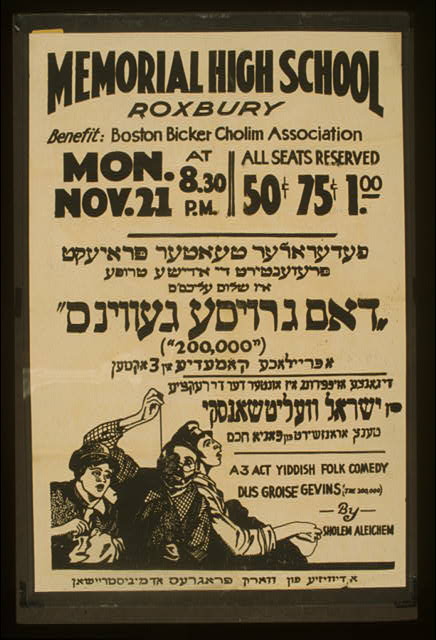
The better working conditions, shorter work weeks and higher pay gained from the Protocol of Peace allowed immigrants who before had little time outside of work to have more free time and money, allowing them to go out and participate in aspects of American society such as going to the Yiddish theaters, baseball games or Coney Island. Going to the theater was a very popular leisure activity in the United States, and many Jewish immigrants too wanted to experience great dramas, tragedies and comedies. Yiddish theaters were established and became very popular as Jewish immigrants could understand the plays even if they didn’t know English, and could take the time to participate in this American pastime and enjoy entertainment. The newspaper, The Jewish Voice reported on this popularity in an article on May 19, 1911, Madame Keny Lipzin, “the Greatest Yiddish actress and tragedienne… will appear in her latest success, the greatest play, which was the talk of the whole season…‘Cards.’”1 The article continues on to tell of the various locations those wishing to see this popular play can reserve tickets. Jewish immigrants also participated in American society though purchasing ready-made clothes. Rose Cohan recounts her excitement about buying a new navy blue cashmere dress, it was “not home-made… and cost a week’s wages… but it was worth it. It was so pretty and gave me a great deal of joy.”2
In her autobiography Rose Cohan often talks about the beautiful dresses ‘American’ women wore, and clothes like her ready-made navy blue cashmere dress made her feel like she could look like them. She also says that “a child that came into” the United States “and began to go to school had taken the first step into the New World.” However, she had only “caught a glimpse” of the United States. Through going to night school and learning how to read English she discovered the joys of reading, joined a library and said, “I was reading and I was quickly learning the ways of this country.” Through activities such as these, Jewish immigrants were able to join in the dominant culture in the United States, giving them more freedoms and opportunities. By gaining these privileges, White Americans began viewing Jewish immigrants as American and also as White. After ‘becoming’ American and White, Jewish immigrants from Eastern Europe also began to contribute to Whiteness. Despite having once been Others themselves, White Jews in America now participate in Whiteness’ violent nature of suppressing, silencing and physically harming the Other, both systematically and institutionally propagating White Supremacy and racism.
1. “Yiddish Company At Olympic,” The Jewish Voice, May 19, 1911. http://jpress.org.il/olive/apa/nli/?href=TJEWVC%2F1911%2F05%2F19&page=7&entityId=Ar00709#panel=document.
2. Rose Cohan, Out of the Shadow: A Russian Jewish Girlhood on the Lower East Side, Documents in American Social History (Ithaca, NY: Cornell University Press, 1995), 129.
3. Ibid., 246.
4. Ibid., 256.